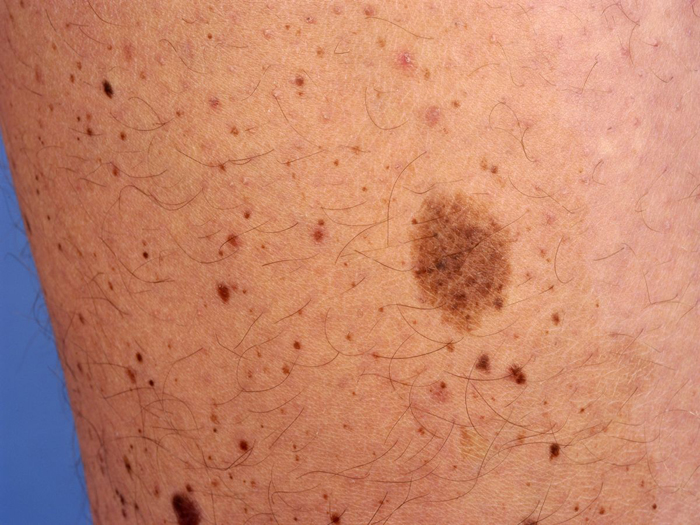
Melanocytic nevocellular nevi (NCN) are small (< 1 cm), circumscribed, acquired pigmented macules, papules, or nodules composed of groups of melanocytic nevus cells located in the epidermis, dermis, and rarely, subcutaneous tissue.
Causes of Acquired Melanocytic Nevocellular Nevi
One of the most common acquired new growths in Caucasians (most adults have about 20 nevi), less common in blacks or pigmented persons, and sometimes absent in persons with red hair and marked freckling.
Race Blacks and Asians have more nevi on the palms, soles, nail beds.
Heredity Common acquired nevi occur in family clusters. Dysplastic nevi (Clark’s nevi), which are putative precursor lesions of malignant melanoma, occur in virtually every patient with familial cutaneous melanoma and in 30 to 50% of patients with sporadic nonfamilial primary melanoma.
Sun Exposure A factor in the induction of nevi on the exposed areas.
Significance Risk of melanoma is related to the numbers of common nevi and to dysplastic nevi, even if only a few lesions are present.
Symptoms of Acquired Melanocytic Nevocellular Nevi
Nevocellular nevi are asymptomatic. If a lesion persistently itches or is tender, it should be followed carefully or excised, since pruritus may be an early indication of malignant change.
Diagnosis
Melanoma is rapidly increasing in incidence and is best treated by early recognition and excision. Early excision can give cure rates of 99% but this is highly dependent on the education of patients and physicians in early detection. The following guidelines in detection are aimed at early diagnosis of melanoma.
Treatment
Medical Care
Patients with AMs should avoid excessive sun exposure and routinely use a broad-spectrum sunscreen with a sun protective factor of 30 or greater.
Surgical Care
Given the need for proper diagnosis, removal of at least 1 lesion is reasonable to histologically confirm the diagnosis and rule out melanoma.
Prevention
- Currently, no therapy is available to prevent the development of AMs.
- Because sun exposure may modify the number, the appearance, and the progression of some cases of AMs, patients are encouraged to avoid the sun and to routinely use a broad-spectrum sunscreen with a sun protection factor of 30 or greater.
References